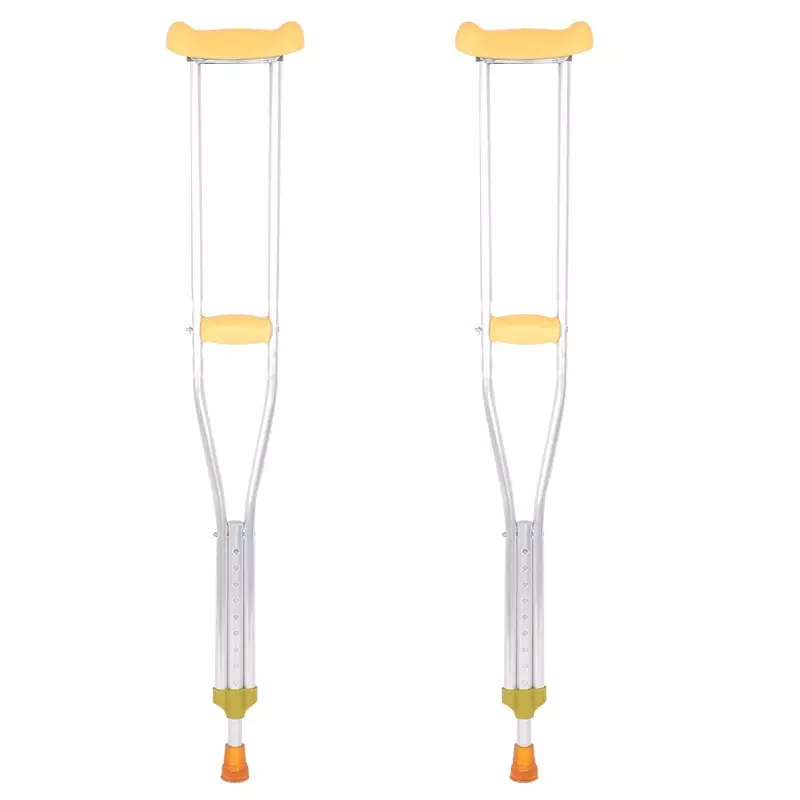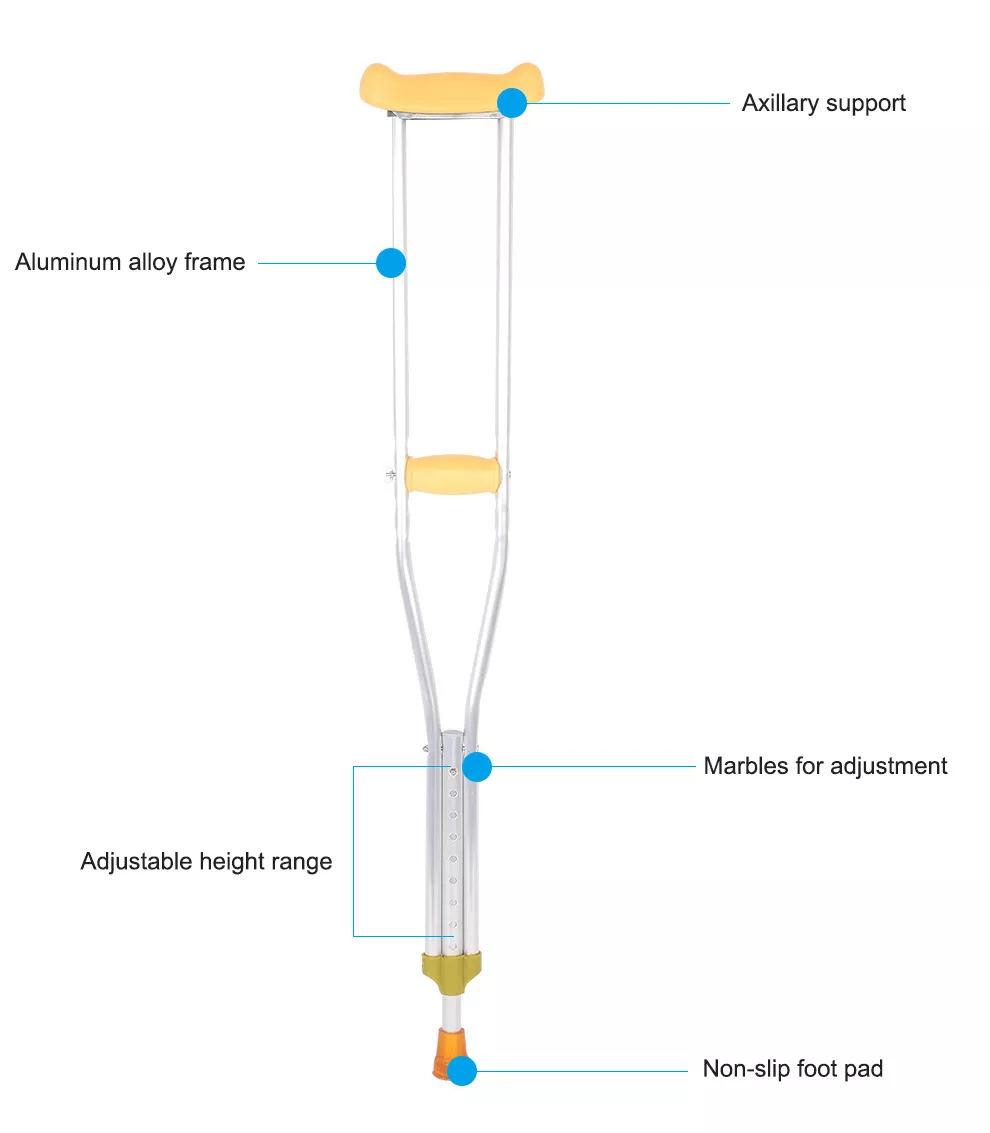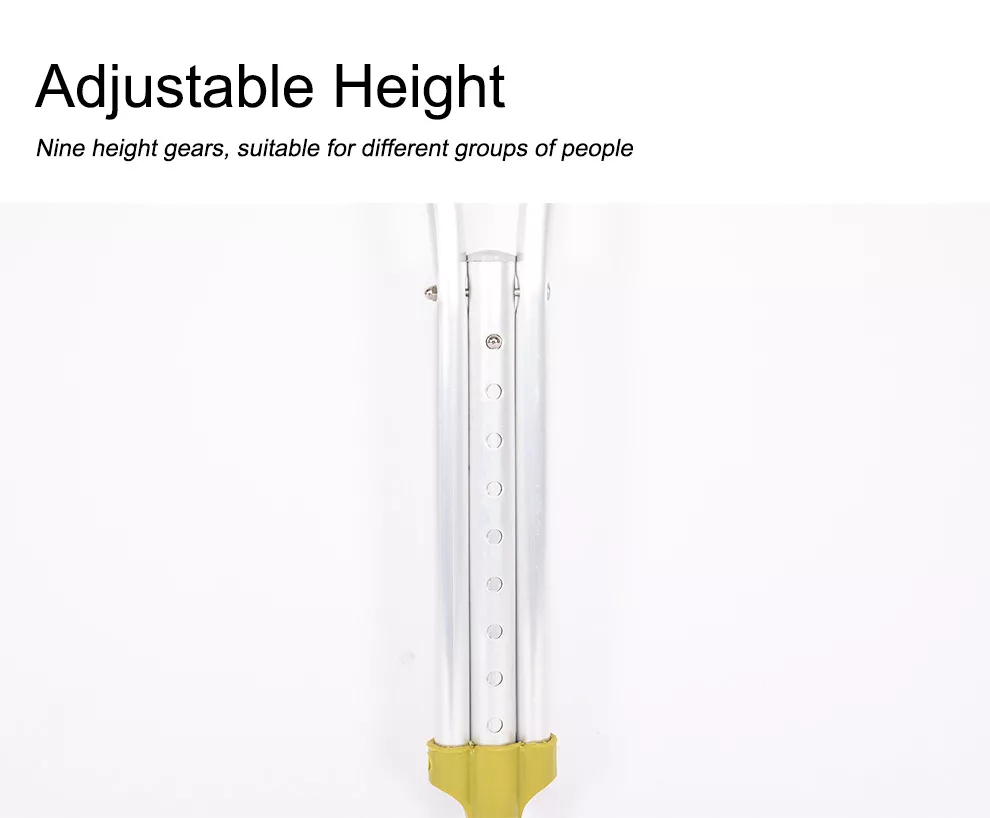Axillary Crutches
| Product name | Axillary Crutches |
| Height | Height : 145-185cm/6 ft |
| Material | Aluminum alloy |
| Bearable weight | 287 Ib/ 130kg |
| Feature | 1.Three sizes and adjustable height, suitable for most people. 2.Use aluminum alloy material, light weight, easy to use. 3.Comfortable arm rest, not uncomfortable after long-term use. 4.Non-slip foot pad built-in steel sheet, strong durability |
What is Axillary Crutches?
Axillary Crutches: Underarm crutches are the most common type of crutch. They have a padded top that fits under your arm below your armpit, a straight frame and a handgrip.
The support point of axillary crutches is in the armpit, which can better control the body’s center of gravity. For patients with weaker strength in both upper limbs and the healthy side leg or those who are weak after surgery, it is safer to use axillary crutches, which is why all we see in the wards are axillary crutches.
It is important to note that the armpit can only be clamped to help positioning, and must not be pressed against, so as not to injure the axillary nerve. Also need to reasonably adjust the height of the upper and lower end. The first day of use because of the use of bad, armpit force, the same night the armpit is all swollen.
The advantage of the axillary abduction is almost no force, relying on body gravity to press and clip, very easy. Especially up and down the stairs is also more convenient. And when you go out, if necessary, you can clip the axillary crutch, temporarily freeing your hands to do things. The disadvantage is that it is relatively less flexible.
How to use Axillary Crutches?
Mistake #1: People who should be using axillary crutches are using walkers instead
Although the walker provides better stability, it can only swing to half of each step when walking, so the walking speed and efficiency is much less than that of the axillary crutches, and the axillary crutches can also climb stairs.
The recommended standard is: one foot injury, but can only use the good foot, holding a stable furniture jump walking cases, should be recommended to use the axillary crutches.
Mistake #2: Using only one axillary crutch when two should be used
If one of the feet cannot support the weight, then two underarm crutches must be used. Because you have to use two hands to try to replace the strength of one foot. You can try to do a human experiment, the average person can easily use only one foot half squat, stand straight more than 10 times, but even if you use two hands, support the weight up and down 10 times is also very hard. Both sides at the same time using the underarm crutches, walking more symmetrical, walking efficiency is also higher.
Mistake #3: Swinging through when you should be swinging through, but only swinging halfway (Swing-to)
Many people learn to swing underarm crutches by intuitively swinging only halfway (Swing-to) and stopping when the crutches hit the ground, which wastes energy on braking and causes stagnant and uneven gait, which is a great pity. It is very important to learn the swing-through gait technique, which can greatly improve walking speed and efficiency.
You can observe that many polio patients can walk close to normal speed with a pair of underarm crutches even if they have no strength in one foot, without blushing or panting, relying on the secret of swing-through. So we young people in general have a slightly broken leg, there is really no reason to need the help of the next person to push the wheelchair ah!
Some people have poor motor skills and just can’t learn the Swing-through gait technique, so it is recommended to use a walker directly, which will be safer.
If you use an axillary crutch but only have half the swing-to, the walking speed and efficiency is actually the same as a walker. Since the speed and efficiency are the same, the axillary crutches are less stable, so of course it is better to choose a more stable and safer walker.
Mistake #4: crutches should move together with the affected limb, but in two stages of movement
If the affected limb can slightly step on the floor to bear the weight, then the use of underarm crutches will use a 3-point gait, that is, two crutches and the affected limb together, three points at a time to bear the weight of the scattered way, many beginners will crutches first, then the affected limb to follow, this can certainly be a method of learning in stages, but remind, the final goal should be able to two crutches and the affected limb together to step out, so that speed and efficiency will be high.
Mistake #5: Wrong side: Crutches should be held on the healthy side but wrongly held on the affected side
When the affected limb starts to encourage weight bearing, it is possible to use only one axillary crutch, which should be held on the healthy side. Many people mistakenly hold the crutches on the affected side because they always want to replace the affected side with the crutches, which is not the case. Encourage weight-bearing period, crutches are to help, not replace, held on the healthy side of the force will be balanced and stable; on the contrary, held on the affected side of the body walking obviously shaky, unstable, inefficient.



